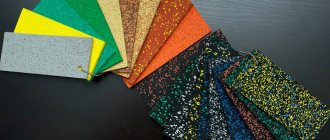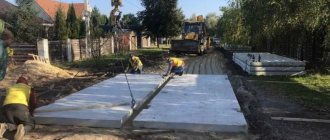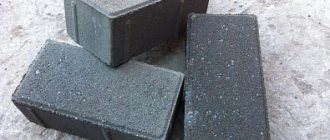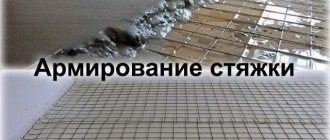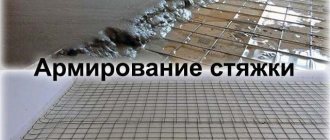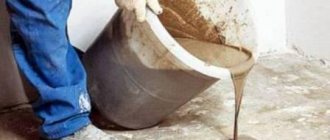9854 0 6
Icer June 2, 2016Specialization: master in the construction of plasterboard structures, finishing work and laying floor coverings. Installation of door and window units, finishing of facades, installation of electrical, plumbing and heating - I can give detailed advice on all types of work.
Hello! Today's article is intended for those who doubt whether carpet underlay is needed. I'll explain why using an undercoat is essential if you want to keep your finish looking great for as long as possible. And for clarity, I will conduct a comparative review of the materials offered on the flooring market. So, let's go!
In the photo: this is what the ideal flooring structure looks like. There is a backing on the plywood base, and the carpet is placed on it
Do you need underlay for carpet?
For parquet or laminate, this element is required and is purchased along with the floor covering.
But many people disagree about carpeting. Some people say that there is no need for a backing for this material, since it itself is soft and has good heat-insulating properties. Others say that this material can be installed or dispensed with. For example, in Europe, laying carpet on a backing is a step performed using the correct technology. But in Russia, carpet underlay is rarely used. Be that as it may, any flooring specialist will tell you that you definitely need to put a special material under the carpet, which will be discussed in this article.
First, let's find out what advantages the substrate has.
Benefits of laying carpet on underlay
- The service life of the carpet will increase by 2-3 times. The substrate perfectly performs shock-absorbing functions, taking most of the loads on itself. As a result, the carpet will retain its properties and original appearance for a long time.
- Extra softness. Even thin, inexpensive carpet laid on a backing will be as soft as shag carpet.
- Increased heat, sound insulation and hygroscopicity.
- Additional floor leveling. If, for example, a carpet is laid on an uneven wooden floor or on uneven concrete, then a backing (for example, 5 mm thick) under the carpet will even out minor irregularities, grooves, and defects. The material will also help get rid of creaks and swelling of the coating.
Laying the underlay on a “bare” concrete floor can be said to be mandatory. It will help retain heat, limit the penetration of moisture, and hide minor imperfections in the surface of the subfloor.
Installation recommendations
After choosing a high-quality substrate option, you need to carefully study the method of its installation.
This process is described in detail in one of the reviews, so here I will briefly talk about this work so that you understand the differences:
This is what the process of selecting and laying a substrate looks like
- First of all, it is necessary to measure the area; you should not rely on the project; in fact, the parameters may differ, and quite significantly . Make a rough sketch marking all the openings and other features of the room; with its help, all calculations will be much easier. And always leave a small reserve so that in case of mistakes you still have enough material;
- Next, you need to decide what type of coating is best to use indoors . For bedrooms and other rooms with low traffic levels, you can use a budget polyurethane foam option. Where the loads are higher, it is best to use polyurethane (the degree of rigidity depends on the type of room), and if the room has a heated floor system, then the ideal solution is a rubber base;
- As for the base, it needs to be leveled; for this you can use either sheet material (plywood, chipboard) or a leveling solution, the most important thing is that you end up with a flat plane . It is very important that the level difference is no more than 3 mm per linear meter and that there are no significant irregularities or flaws on the surface;
Let's look at the mounting methods, there are only three of them:
- just laying and fixing with skirting boards (not recommended);
- using double-sided tape;
- glue method.
The latter solution is used most often due to its reliability. If you are simply laying the substrate, then be sure to glue it at least around the perimeter and near the entrance opening, since there are the highest loads on the surface.
Gluing the substrate with your own hands will not be difficult; the instructions for carrying out the work are simple: the composition is applied in a thin layer, after which the base is pressed and leveled
As you can see, the process of laying the substrate is quite simple; the work can be done even without experience in this field.
As for the main recommendations, there are a couple of important ones:
- Be sure to leave an overlap of 50-70 mm on the walls; excess material is cut off only after leveling and fastening, when you can see how the material lies and what needs to be cut off. Cutting is done using a carpet knife or regular scissors;
- V-shaped notches are made in the corners to ensure a tight fit in these areas.
Types of carpet underlay
Manufacturers offer several types of material that are laid under floor coverings. Which underlay to choose for carpet? Let's look at each type in more detail and then answer this question.
Polyurethane foam backing
The basis of such a substrate is polyurethane foam, a material with excellent hydro-, sound- and heat-insulating properties. Polyurethane foam backing for carpets is used not only in apartments, but also in hotels, medical institutions, offices and other premises. This material will help hide the floor surface with minor unevenness and defects. The floors will become warmer, softer, more comfortable.
Polyurethane backing
This backing is slightly thicker than polyurethane foam. It has a top polyethylene layer for better protection against moisture penetration. The material is optimal for installing carpet using the stretching method (on special grip strips).
The polyurethane backing is made from an artificial jute base and a paper base. Instead of polyethylene, felt can be used for the top layer. This material retains heat even better, reduces sound transmission to a minimum, and smoothes out uneven surfaces of the subfloor.
Crumb rubber backing
This material is suitable for laying many floor coverings, including carpet, laminate, parquet. A dense and elastic substrate after laying carpet on it becomes elastic and soft.
The crumb rubber backing perfectly retains heat and does not allow moisture and noise to pass through. This material is ideal for laying under natural carpet.
Cork backing
High-quality, but rather expensive material, consisting of coarse or fine-grained cork. Ideal for laminate and parquet boards. In the case of carpet, it is an excellent soundproofing underlay.
Which underlay is best for carpet? Of all the options listed, polyurethane foam material is considered optimal in terms of price/quality. It is suitable for any surface and has excellent sound and heat insulating properties.
What should you consider before purchasing?
When choosing a substrate, pay attention to the following points:
Density indicator
First of all, it is necessary to check the substrate for elasticity, for which it is enough to crush it. A suitable option will not lose its shape and almost immediately takes on its original appearance. In this case, you can safely purchase the material. The density of the substrate is also taken into account: it should be soft, but not too soft, otherwise this disadvantage will affect the strength.
High-quality substrates are resistant to compression and therefore quickly return to their original form. If this does not happen, you should refuse the purchase.
Substrate thickness
In addition, stepping on the floor should be comfortable: the softness and thickness of the coating plays a role. The value of the last of these parameters can vary within 5-10 mm, but there are varieties with a thickness from 1 to 5 mm, however, they are worse in operation. Along with the above criteria, the porosity of the material should also be taken into account: the substrate must be “breathable” so as not to create a greenhouse effect.
Popular manufacturers of polyurethane foam backing: Napa, Tuplex, BerberMax. Good quality cork coverings are offered by: Ipocork, Mjo, Matrix. Polyurethane analogues are produced: Dtr 30, T5, and rubber substrates - Durafit 500.
Product cost and quality
A protective layer for a subfloor made of various materials (concrete, wood, etc.) is offered at different prices, which is influenced by the quality and parameters of the coating. On average, roll polyurethane protection can be purchased within the range of 180-300 rubles/sq. m. Simpler analogues are offered at a price of 200-500 rubles/pack.
Benefits of use
Do you need compelling arguments to purchase carpet underlay? Please - there are a lot of them. So, the substrate is capable of:
- increase the service life of the coating at least twice. Carpet backing ensures maximum operating efficiency of the coating with minimal wear. In addition, this intermediate layer acts as a shock absorber, taking on the main load from human movements;
- help achieve the effect of absolute comfort and softness of the surface. With its help, even a thin carpet seems thick, fleecy and luxurious;
- improve the thermal insulation, sound insulation and hygroscopic properties of the carpet floor;
- level out small unevenness in the subfloor.
The use of a backing becomes especially important when laying carpet directly on a concrete floor. If linoleum (smooth and not mutilated) serves as a rough covering, you can do without it.
↑ Substrate and parquet
I would like to make a separate point about laying carpet on parquet and parquet boards. In this case, the use of an underlay is mandatory, since even the most ideal parquet from the point of view of laying creates an increased load on the carpet at the joints of the parquet blocks. For high-quality installation of carpet on parquet, experts recommend using the stretching method on gripper slats. Of course, this fastening option somewhat damages the parquet, but such a sacrifice is necessary for longer service life of the carpet.
The gripper strip will allow you to lay carpet on the parquet with high quality
Peculiarities
The peculiarity of any type of substrate is that it extends the service life of the coating and, depending on the material, increases it by two or even three times. This is achieved due to the high shock-absorbing properties of the substrate, which takes on the bulk of the load and distributes the rest evenly over the carpet area approximately 1 m2 from the person’s foot. Without a backing, all carpets take on the entire friction load and wear out faster. With it, there are no traces of furniture left on the carpet, the pile rises faster and more completely.
The second feature is giving the flooring additional softness. A pad placed between the floor and a thin carpet makes it comparable in softness to a long-pile carpet.
It’s not even worth mentioning that a short-pile or looped carpet is much easier to care for than a fluffy carpet.
If the thickness of the substrate is not less than 0.5 cm, then it is not necessary to additionally level the surface (lay a new screed on top of the old one). If the floors are wooden, then the underlay prevents the effect of a “floating” floor and prevents the floor covering from swelling and sagging.
Another characteristic is a high level of noise insulation, increased thermal properties of the carpet and, most importantly, increased hygroscopicity. Thanks to the interlayer, the coating will not mold from accidental moisture, which often occurs on a concrete screed in the off-season, neighbors below will not complain that elephants are running around your house, and in winter your feet will be warm even without socks.



